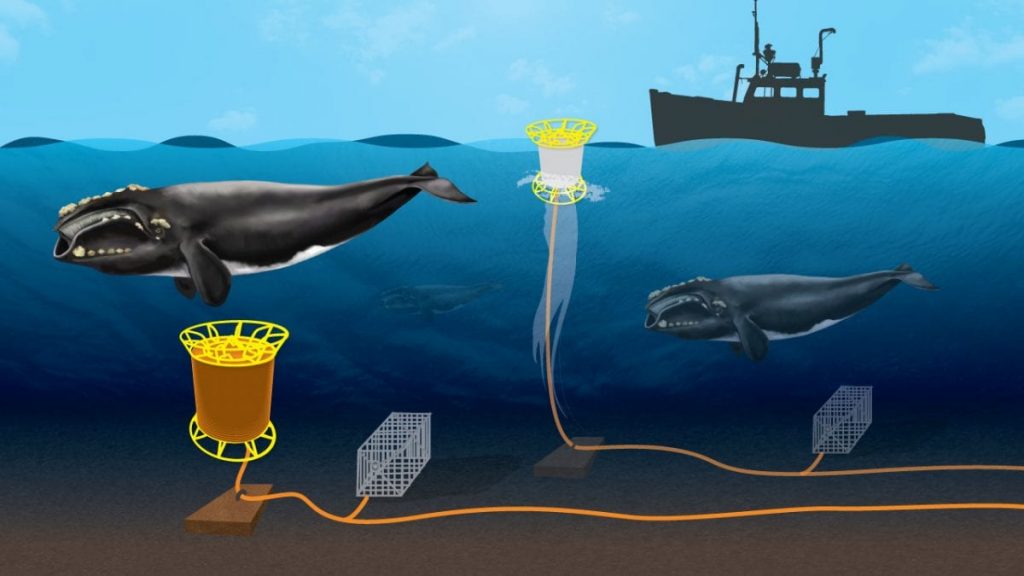Project Highlight: Development of an Ultra‐Low‐Power Acoustic Wake‐Up Receiver for Buoyless Fishing
Principal Investigators: Jim Partan (WHOI/AOPE), Mark Baumgartner (WHOI/Biology), and Aatmesh Shrivastava (Northeastern University)

The North Atlantic right whale is critically endangered with fewer than 340 animals alive in the world today. Only a decade ago, there were nearly 500 right whales, but decreased birth rates and dramatically increased human‐caused mortality has caused a precipitous decline in the species. Scientists estimate that 258 right whales have died in the past 10 years, and of the whales that have been recovered for post‐mortem examination, most of those deaths are attributable to fishing gear entanglements and vessel strikes.
The Woods Hole Oceanographic Institution (WHOI) has been involved in research and technology development aimed at reducing these threats, including health monitoring, real‐time passive acoustic surveillance, and buoyless (or ropeless) fishing. While expanding buoyless fishing efforts, this project concentrates on the development of an ultra‐low‐power wake‐up receiver to significantly improve the longevity of acoustic systems designed to mark the location and facilitate retrieval of fishing gear on the seafloor.
Recent demonstrations of acoustically‐commanded buoyless fishing gear show that we can secure lines and lift bags on the seafloor, thereby keeping ropes out of the water column and reducing the entanglement hazard to whales, sharks and turtles. This demonstration gear is being trialed by fishermen from Massachusetts to Maine, and the results to date indicate that retrieval of the fishing gear using an acoustic trigger is highly reliable. Despite this success, the gear is not yet ready for transition to broad commercial use. A significant shortcoming of these systems is that the acoustic receiver on the fishing gear currently consumes too much power, mostly because it needs to stay on while listening for incoming signals from fishing vessels. This requires a large battery that needs frequent recharging or replacement. Fishermen would much prefer to service batteries once per year, and the smaller the batteries, the less expensive and bulky the gear would have to be.
WHOI personnel are working with Dr. Aatmesh Shrivastava at Northeastern University to develop an ultra‐low‐power wake‐up receiver to reduce the power consumption of these devices by a factor of 100. A wake‐up receiver is a component of an acoustic system that runs at low power while the rest of the system is hibernating. When a specific acoustic signal is detected by the receiver, it "wakes up" the hibernating system. The wake‐up receivers used in WHOI‐designed acoustic devices use traditional electronic design techniques with off‐the‐shelf electronic chips and components. Dr. Shrivastava has developed specialized wake‐up receivers for radios using analog designs that consume 10,000 times less power than traditional acoustic wake‐up receivers.
Our goal is to adapt this technology for the ocean, producing a new ultra‐low‐power wake‐up receiver that may be able to be powered simply by the acoustic energy present in the ocean’s ambient noise. Such a receiver would make buoyless fishing gear much easier to use and therefore much more likely to be adopted by the fishing industry, which in turn would significantly reduce right whale entanglements.